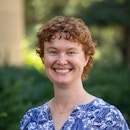How Exoplanets Provide Insight Into Atmospheric Physics Within Extreme Regimes
- Speaker
-
 Emily Rauscher, Ph.D.Associate Professor, Astronomy, University of Michigan
Emily Rauscher, Ph.D.Associate Professor, Astronomy, University of Michigan
Presidential Lectures are a series of free public colloquia spotlighting groundbreaking research across four themes: neuroscience and autism science, physics, biology, and mathematics and computer science. These curated, high-level scientific talks feature leading scientists and mathematicians and are designed to foster discussion and drive discovery within the New York City research community. We invite those interested in these topics to join us for this weekly lecture series.
What would happen to the atmosphere of Jupiter if we moved it to a tenth of Mercury’s distance from the sun? From basic atmospheric physics, we would expect it to retain its atmosphere. Still, the wind speeds would increase, the circulation patterns would change, and there would be huge temperature differences between the day and night sides. We might even expect the day to be hot enough for ions to be sprinkled throughout, while on the night side, clouds composed of mineral and metallic species could form. This extreme environment is not a thought experiment but the conditions we expect for a class of exoplanets known as hot Jupiters. This is just one example of the diversity of worlds we have discovered orbiting stars within our galaxy. With over 5,000 exoplanets discovered, nature has forced us to stretch our understanding of atmospheric physics into exciting new regimes.
In this Presidential Lecture, Emily Rauscher will begin with a brief overview of the state of exoplanet detection and atmospheric characterization. She will then focus on hot Jupiters, as these planets are the most extreme in their atmospheric physics and the planets whose atmospheres we can measure in the most detail. She will highlight discoveries about atmospheric physics in this regime, some of the remaining mysteries, and why it is so challenging to numerically model their atmospheres. Finally, she will imagine what new insights future observational and numerical advancements might bring.
